To learn more about how to make this special kind of cake, we visited a house in An Thoi Ward, Binh Thuy District in Can Tho Province, owned by Huynh Thi Trong, a local woman skilled in making Banh Tet La Cam for many years. At the age of 87 years old, she looked still healthy and was sound in mind. Local villagers said that Trong is the first villager to make this kind of cake and has contributed greatly in developing the craft over the past years.
“Long ago, my family cooked sticky rice for sale. We used a kind of tree leaves with a violet colour (called La Cam in Vietnamese) and soaked them in water with the glutinous rice. When the rice is well done, it has a fragrant smell with a nice violet colour, so I thought I should make the Banh Tet having the same colour (Banh Tet La Cam) to make it more attractive and tasty to the buyers,” the artisan recalled.
According to the artisan, it takes several step to prepare the Banh Tet La Cam. The main ingredients include sticky rice, green bean, coconut extract, fat pork, salted egg yolk and banana.
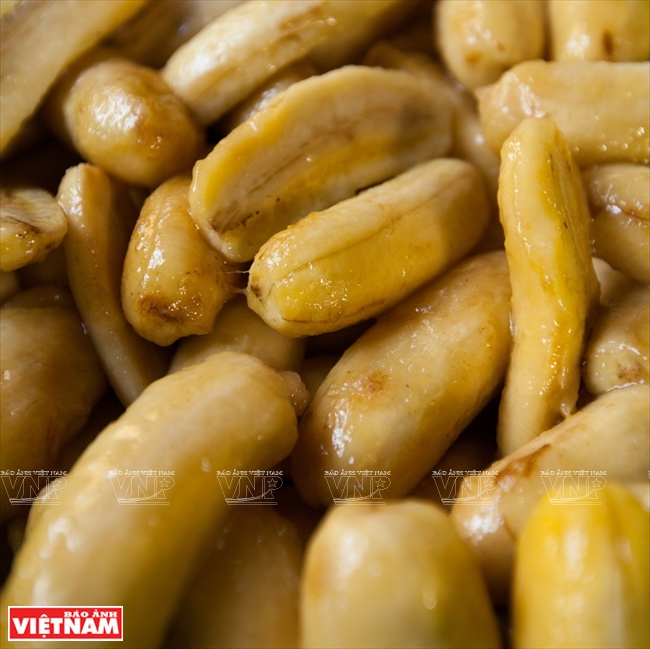
Banh Tet La Cam will have a special flavour if ripe bananas are used for the cake’s stuffing.

Grinding green beans with bananas and salted egg yolks for the cake’s stuffing.

The main ingredients of the Banh Tet La Cam with violet coloured stuffing
are sticky rice and violet tree leaves which is processed carefully using a special formula.
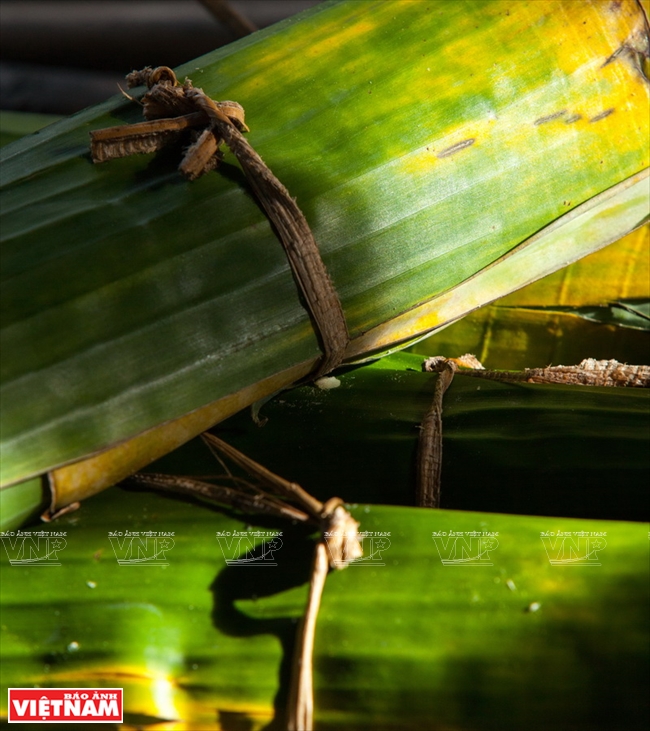
Strings to tie the cake can be bamboo strips or split from banana tree bark.
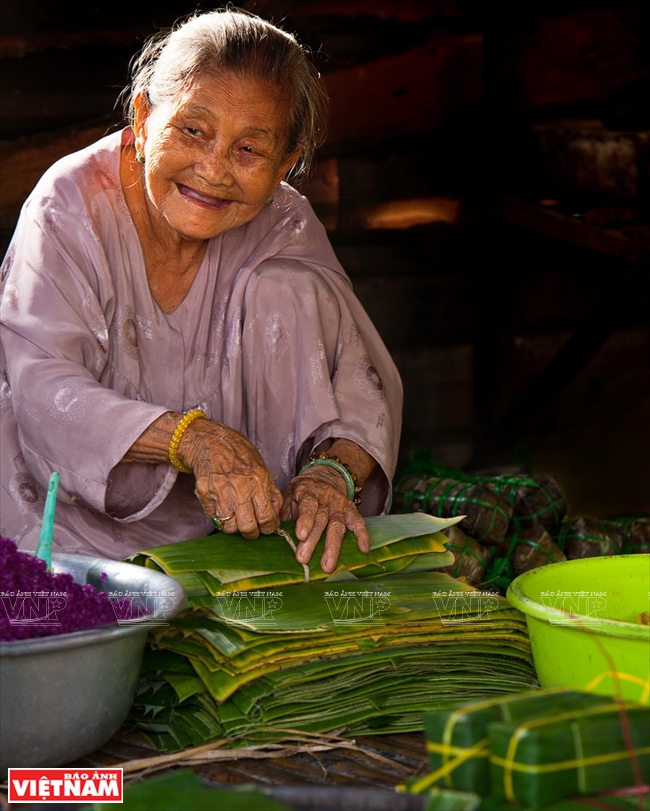
Huynh Thi Trong is the first villager to know how to make the special violet cake in Can Tho Province.
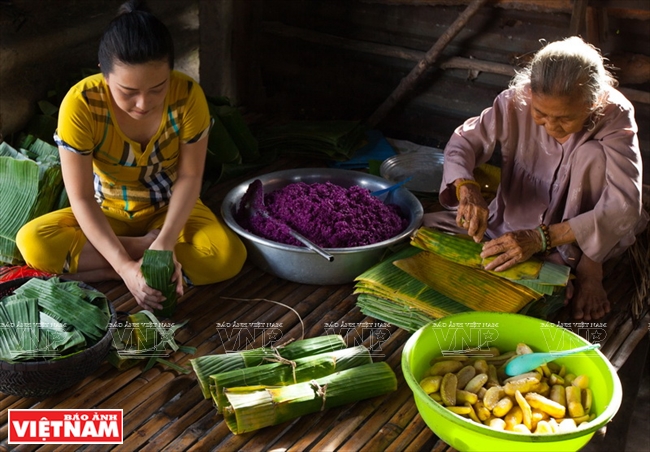
Trong teaches a family member to make Banh Tet La Cam.
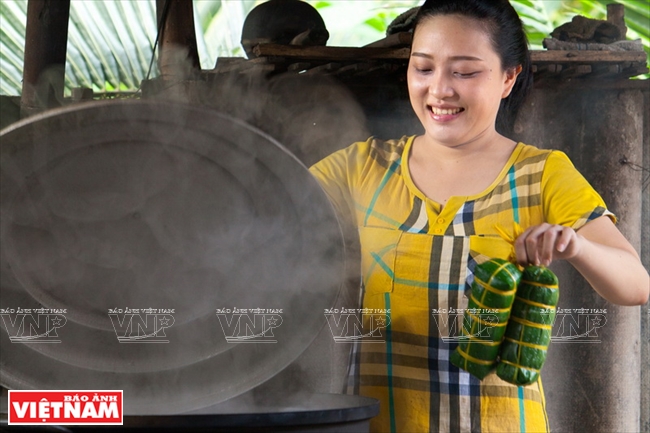
The time for boiling Banh Tet La Cam also decides the quality of the cakes.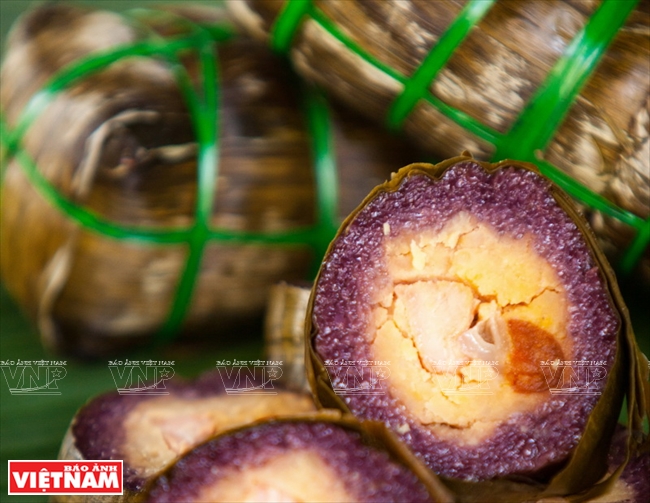
When cutting the rice cake into round pieces to serve.

On holidays, especially during Tet (lunar New Year festival), Trong and
her staff can make almost 1,000 Banh Tet to meet the customers’ rising demand. |
The first and very important step is to select good sticky rice. Then comes the fresh, violet tree leaves, which are cleaned and boiled to get the violet water. Sticky rice is then soaked into the water for about one hour, then is mixed with coconut extract, a bit of salt and sugar before being cooked less than half-done. The half-done rice will be wrapped in banana leaves into cylindrically-shaped cakes.
The next step, also very important to the taste of the cake, is how to cook the raw cake in the best way. Dried wood is used to boil the water containing the cakes with a stable fire for about four or five hours before the cakes become well done.
When cutting the Banh Tet La Cam into round pieces, they will show off different circles, including the finely violet sticky rice, the fat pork, salted egg yolk and green bean paste which all produce a good smell that attracts any buyer.
The Banh Tet La Cam is much sought after by visitors to Can Tho Province. Every day, Trong said that she could make about 100 cakes, each costing 40,000 VND (roughly 2 USD). But on holidays, especially during Tet (lunar New Year), she and her staff have to make almost 1,000 cakes to meet the customers’ rising demand.
Normally, there are four kinds of Banh Tet La Cam, including a mixed one with salted egg yolk, others with banana, sweet green bean paste, and green bean paste with fat pork.
Besides Trong’s shop, there are now more shops that have opened in the locality to sell Banh Tet La Cam, all winning customers’ fondness. The cakes are purchased and transported for sale in other localities, including Ho Chi Minh City, Binh Duong and Dong Nai provinces. They are also bought by tourists as special gifts to take home to the United States and Australia, where many overseas Vietnamese show their extreme love for the cakes because they have the unique taste of the southern province of Can Tho, a locality widely popular for its fragrant rice in Vietnam.